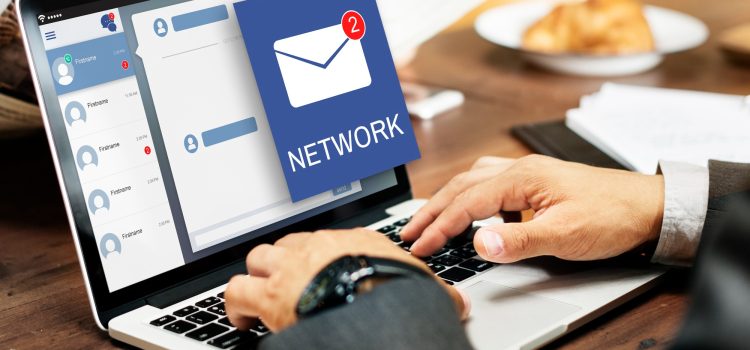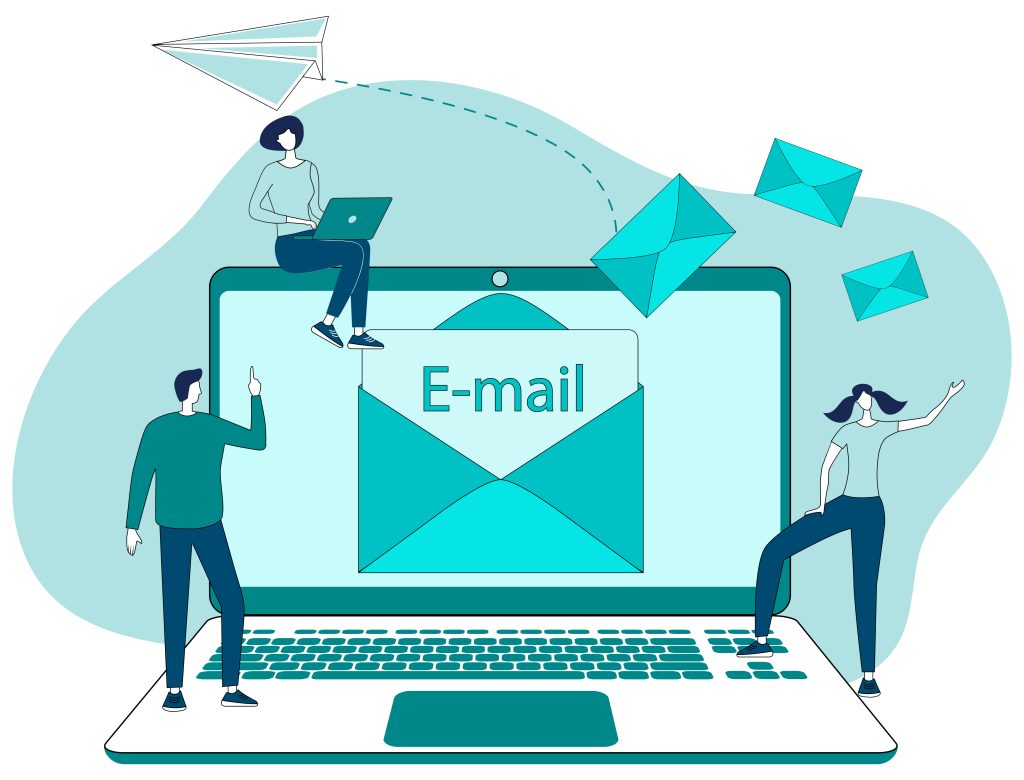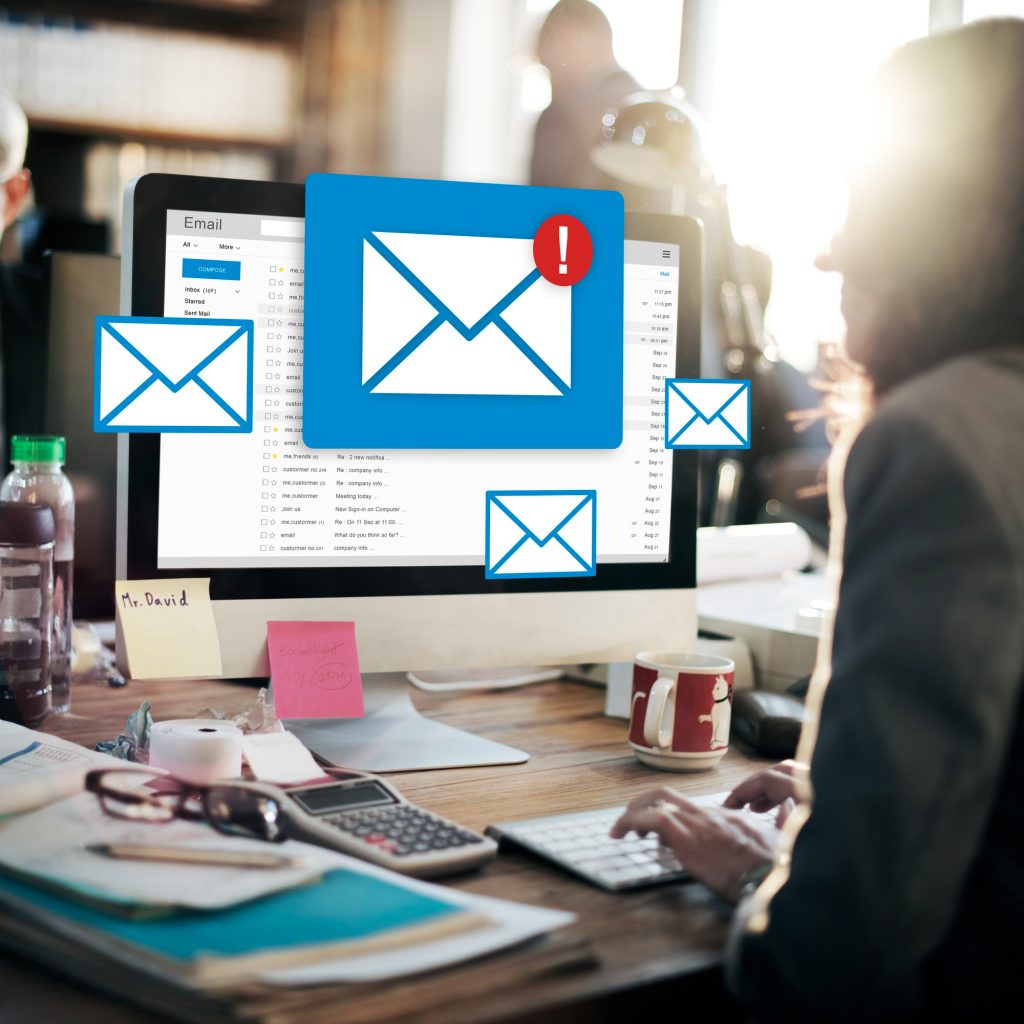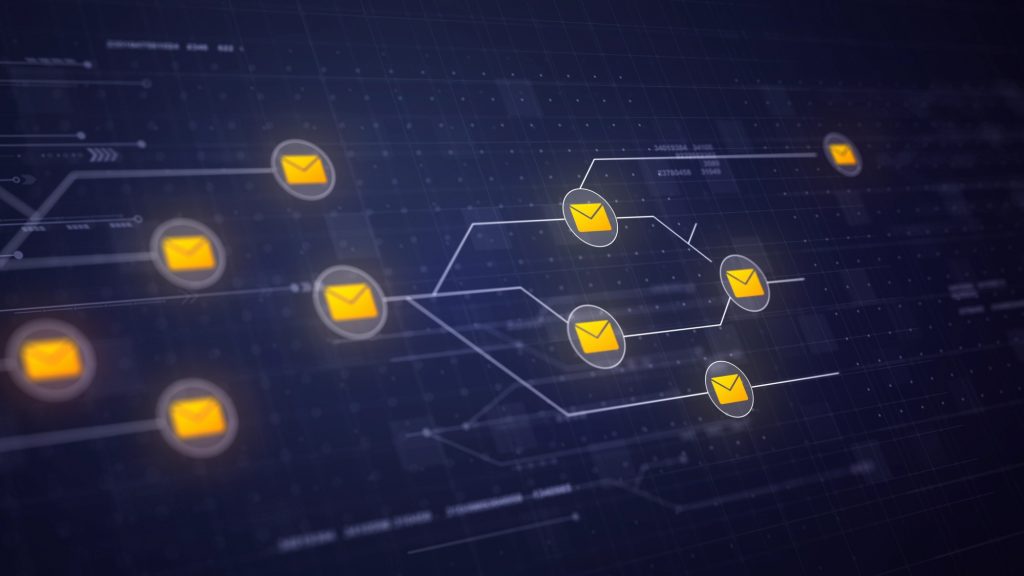










Email marketing remains a steadfast cornerstone of successful business strategies. It’s a direct line to your audience—a chance to engage, educate, and enchant. Yet, as the world becomes increasingly interconnected, the challenges of managing and scaling email campaigns have become more complex than ever before. How can you ensure that your emails reach the right inboxes at the right times, delivering messages that resonate and drive action?
Enter email automation, a beacon of innovation that has revolutionized the way marketers connect with their audience. Picture sending tailored messages without manual effort, orchestrating a symphony of personalized interactions, and turning once-passive subscribers into engaged brand advocates. It’s the realm where precision meets creativity, where efficiency dances with authenticity. Welcome to the world of streamlining your marketing campaigns through email automation—a realm where strategic prowess meets technological marvels.
In this insightful journey, we’ll unravel the power of email automation, demystify its inner workings, and unveil the remarkable impact it can have on your marketing efforts. Whether you’re a seasoned marketer or an aspiring entrepreneur, this article will guide you through the art and science of harnessing email automation’s potential to streamline your campaigns, elevate customer experiences, and achieve remarkable results.
Table of Contents
Toggle

Email automation stands as a cornerstone innovation that has redefined the way businesses engage with their target audience. At its core, email automation is a strategic approach that utilizes technology to streamline and optimize the delivery of emails based on predefined triggers and conditions. This method transcends the limitations of manual intervention, allowing marketers to orchestrate a seamless flow of communication that aligns with the recipient’s behaviour, preferences, and journey within the sales funnel.
In essence, email automation is akin to a conductor guiding an orchestra, ensuring that each note is perfectly timed and harmoniously synchronized. Through the intricate interplay of technology and strategy, email automation empowers marketers to deliver messages that are not only timely but also relevant, thus enhancing the overall efficacy of their campaigns.


The realm of email automation presents a panorama of advantages that transcend the conventional boundaries of marketing. These benefits coalesce to form a symphony of efficiency, personalization, and enhanced engagement, ultimately orchestrating an experience that leaves an indelible mark on both businesses and their audience.
Increased Efficiency
Email automation acts as the maestro of efficiency, liberating marketers from the arduous choreography of manual email distribution. Imagine a scenario where, after a single setup, triggered emails seamlessly cascade into recipients’ inboxes, tailored to their interactions. This efficient automation liberates your team’s bandwidth, allowing them to focus on crafting compelling content and devising strategic campaigns.
Example: A clothing retailer sets up an automated welcome series that triggers upon a subscriber’s signup. A meticulously planned sequence of emails showcases the brand’s offerings, leading to an exclusive discount code, all delivered seamlessly without manual intervention.
Precision Personalization
Email automation weaves a tapestry of personalized communication that resonates with each recipient’s journey. Through careful segmentation and data analysis, messages transform into tailored experiences. It’s akin to a virtuoso customizing a performance for each member of the audience. The result is a deeper connection that elevates engagement.
Example: An e-commerce platform employs automation to send personalized recommendations based on browsing and purchase history. A customer who recently bought running shoes receives an email with complementary running accessories, creating a sense of personal attention.
Timely Engagement
The automated cadence of email campaigns ensures that messages reach recipients at opportune moments, creating an orchestration of engagement. Just as a conductor guides a symphony, email automation orchestrates messages to align with specific triggers, delivering content when it matters most.
Example: An online course provider triggers a follow-up email after a user completes a module. This timely email thanks the user for progress, offers a glimpse of the next module’s content, and reinforces their commitment to learning.
Enhanced Segmentation
Segmentation is the harmonious division of your audience into distinct groups, each resonating with tailored messages. Email automation elevates this process, allowing for dynamic categorization based on behaviours, demographics, and interactions. The result? A crescendo of relevance that captivates recipients.
Example: A travel agency employs segmentation to categorize customers based on their travel preferences—luxury, adventure, and family. Subsequently, automated emails feature exclusive deals and destinations tailored to each segment’s preferences.
Data-Driven Insights
In the world of email automation, data isn’t just a series of numbers; it’s the sheet music that guides your campaign’s melody. Detailed analytics provide insight into open rates, click-through rates, and conversion metrics. These insights act as the conductor’s baton, guiding you to refine your approach for optimal impact.
Example: A software company observes that automated onboarding emails have higher engagement rates than generic newsletters. Armed with this data, they adjust their strategy to incorporate more onboarding-focused content.
Just as a composer meticulously arranges notes to create a symphony, crafting an effective email automation strategy requires careful orchestration of elements to resonate harmoniously with your audience. A well-designed strategy is the foundation upon which successful email automation campaigns are built. It involves defining clear objectives, understanding your audience, mapping customer journeys, creating compelling content, and continuously refining your approach based on data-driven insights.
Defining Clear Goals: Begin by setting precise goals for your email automation efforts. Whether it’s increasing sales, nurturing leads, or driving engagement, well-defined objectives serve as your guiding notes throughout the orchestration process.
Audience Segmentation: Like sections in an orchestra, your audience is diverse and requires differentiation. Segment your subscribers based on demographics, behaviour, interests, and purchase history. This segmentation ensures that each message resonates with the unique preferences of its recipients.
Mapping Customer Journeys: Just as a musical journey has distinct movements, customer journeys have stages. Map out the touchpoints your customers encounter, from initial contact to conversion and beyond. Identify triggers that prompt specific emails to be sent at critical moments in their journey.
Creating Compelling Content: Just as melodies captivate the listener, content engages the reader. Develop a content plan that aligns with each stage of the customer journey. Whether it’s welcoming new subscribers, nurturing leads, or re-engaging dormant customers, craft content that educates, entertains, and resonates with recipients.
Automation Workflow Design: Like the arrangement of musical instruments, design the flow of your automation sequence. Determine the timing and sequence of emails to ensure a coherent and engaging narrative. This orchestration guides recipients through a journey that feels fluid and relevant.
Testing and Optimization: Just as musicians rehearse to perfect their performance, regularly test and optimize your email automation strategy. Experiment with different subject lines, content variations, and sending times to identify what resonates most with your audience. Use A/B testing to fine-tune your approach based on empirical results.
Imagine an e-commerce retailer specializing in fitness apparel. Their email automation strategy could involve the following elements:


Just as a symphony comprises distinct movements that weave together to create a complete musical experience, an email automation strategy incorporates various types of campaigns, each with a specific purpose and rhythm. These automated email campaigns act as orchestrated sequences, engaging recipients at different stages of their journey, nurturing relationships, and driving conversions. Let’s explore the melodies of various automated campaigns and the unique roles they play in enhancing engagement and achieving marketing goals.
Similar to the opening notes of a symphony, a welcome series is the initial introduction to your brand’s melody. It comprises a sequence of emails that greet new subscribers, setting the tone for future interactions. The welcome series provides an opportunity to showcase your brand’s value, build trust, and encourage subscribers to take further action.
Example: A software company sends a welcome email to new subscribers, introducing them to the product’s features. Subsequent emails in the series include user testimonials, case studies, and a limited-time offer to encourage software adoption.
Just as a conductor guides a symphony’s progression, abandoned cart emails guide users back to their interrupted journey. These emails are triggered when users leave items in their shopping carts without completing the purchase. Abandoned cart emails serve as a gentle reminder and offer incentives to encourage conversion.
Example: An online retailer sends an abandoned cart email featuring the items left behind, accompanied by a discount code as an incentive to complete the purchase.
Drip campaigns are akin to a series of melodic drops that engage recipients over time. They involve sending a sequence of emails at predefined intervals, nurturing leads, and gradually guiding them through the decision-making process. Drip campaigns are effective for educating subscribers and maintaining consistent communication.
Example: An educational platform implements a drip campaign for new subscribers. Over the course of several weeks, they receive emails featuring curated content, insightful articles, and invitations to webinars, gradually positioning the platform as a valuable resource.
Just as an orchestra celebrates milestones with fanfare, birthday and anniversary emails celebrate your customers. These emails are sent on recipients’ birthdays or the anniversary of their first purchase. They create a personal connection, showcasing your appreciation and offering special incentives.
Example: A restaurant chain sends birthday emails to customers, offering a complimentary dessert or discount on their next visit, enhancing customer loyalty and satisfaction.
Similar to a composer rekindling interest with a change in tempo, re-engagement campaigns aim to revive interactions with inactive subscribers. These campaigns target individuals who haven’t engaged with your emails for a certain period. Re-engagement emails often include incentives, reminders of the recipient’s journey, or invitations to update preferences.
Example: A fashion retailer sends a re-engagement email to subscribers who haven’t opened emails in the past three months. The email showcases new arrivals and offers a discount as an incentive to rekindle their interest.
Much like harmonious melodies that complement one another, upsell and cross-sell campaigns complement the customer’s journey. Upsell campaigns suggest premium or upgraded products, while cross-sell campaigns recommend related or complementary items. These campaigns increase the average order value and enhance the customer’s shopping experience.
Example: An electronics retailer sends an upsell email to a customer who recently purchased a laptop, offering an extended warranty or premium software package. Additionally, they send a cross-sell email suggesting laptop accessories such as a laptop bag, mouse, and headphones.
Much like a composer selects the perfect instruments to create a symphony, choosing the right email automation tools is crucial for orchestrating a harmonious marketing campaign. Email automation tools are the conduits that transform your strategy into reality, facilitating the seamless delivery of messages, monitoring performance, and providing insights for optimization. In this section, we delve into the factors to consider when selecting email automation tools and highlight examples of popular platforms that empower marketers to compose successful campaigns.
The future of email automation mirrors the symphony’s evolution—a harmonious blend of tradition and innovation. As technology progresses, marketers must stay attuned to emerging trends, adapting their strategies to resonate with the changing preferences of their audience. By embracing AI-powered personalization, predictive analytics, hyper-segmentation, interactive emails, and other advancements, marketers ensure their campaigns remain in harmony with the ever-evolving rhythms of consumer behaviour and technology.
In the dynamic realm of modern marketing, email automation emerges as a cornerstone strategy that drives engagement nurtures connections, and fuels conversions. The journey through this article has unveiled the essence of effective email automation – from mastering its fundamental principles to crafting personalized messages, mapping customer journeys, and selecting the right tools.
The power of email automation lies in its ability to resonate with recipients, creating meaningful connections that go beyond mere communication. It’s a journey that leads to heightened efficiency, precise personalization, and increased engagement – qualities that are indispensable in today’s competitive landscape.
If you’re looking to harness the potential of email automation without the complexities, our dedicated team is here to assist. Reach out to us for expert guidance in elevating your email marketing strategy. Together, we can transform your campaigns into powerful tools that captivate your audience, deliver results, and establish a lasting impact on your brand’s narrative.
| Cookie | Duration | Description |
|---|---|---|
| cookielawinfo-checkbox-analytics | 11 months | This cookie is set by GDPR Cookie Consent plugin. The cookie is used to store the user consent for the cookies in the category "Analytics". |
| cookielawinfo-checkbox-functional | 11 months | The cookie is set by GDPR cookie consent to record the user consent for the cookies in the category "Functional". |
| cookielawinfo-checkbox-necessary | 11 months | This cookie is set by GDPR Cookie Consent plugin. The cookies is used to store the user consent for the cookies in the category "Necessary". |
| cookielawinfo-checkbox-others | 11 months | This cookie is set by GDPR Cookie Consent plugin. The cookie is used to store the user consent for the cookies in the category "Other. |
| cookielawinfo-checkbox-performance | 11 months | This cookie is set by GDPR Cookie Consent plugin. The cookie is used to store the user consent for the cookies in the category "Performance". |
| viewed_cookie_policy | 11 months | The cookie is set by the GDPR Cookie Consent plugin and is used to store whether or not user has consented to the use of cookies. It does not store any personal data. |
Comments